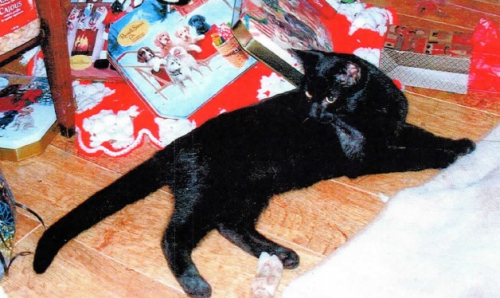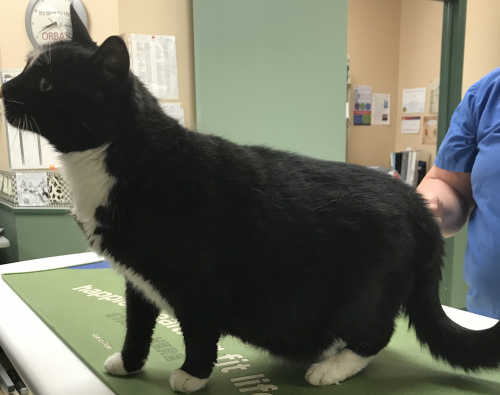
Dorothy, RVT at Clinton Veterinary Services and her husband Wayne, recently had the experience of visiting the London Regional Veterinary Emergency and Referral Hospital. Their cat Philo, a 2 year old domestic shorthair neutered male cat who is normally very active, healthy and an avid hunter suddenly became dull, depressed and would not eat. Dorothy started by bringing Philo to Clinton Veterinary Services, where he was treated with fluids and medications to bring his fever down. Various tests were not showing any source of infection, however Philo was not improving and infact was increasingly dull, depressed and had difficulty breathing. Heading into the weekend, Dorothy and her husband decided to take Philo to the London Regional Veterinary Emergency Hospital where he would receive around the clock care.
“The staff were fantastic!” Dorothy and Wayne report that the staff at the emergency clinic were professional, sympathetic, attentive and efficient. The admitting veterinarian, Dr. Alex Easler, provided a guarded prognosis but said they would do what they could. Philo was hospitalized for several days as they investigated his illness and treated his symptoms. Dorothy and her husband received daily detailed updates from the attending doctors, including Dr. Lillywhite and veterinary technicians as well as the Internal Medicine specialist Dr. Katherine Woods. Dr. Alex even checked in on Philo on his time off! Philo loves people and is always purring, so even when not feeling well, he appreciated all of the attention. Philos owners visited as often as they were able while the veterinary hospital kept them fully informed about costs, including rationale for the various tests and choice of treatments. After several days, Philo started to improve and was able to go home to continue his recovery. Although all tests came back ‘normal’, the source of Philo’s illness was never diagnosed.
Philo, Dorothy and Wayne are grateful to London Regional Veterinary Emergency and Referral Hospital and highly recommend their services. They are happy to report that the treatment and care that Philo received was successful and he is once again a healthy, happy cat!
For more information about out of hours emergency services please visit;





Recent Comments